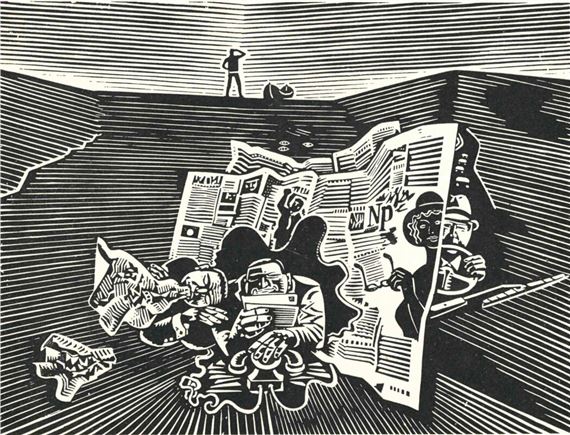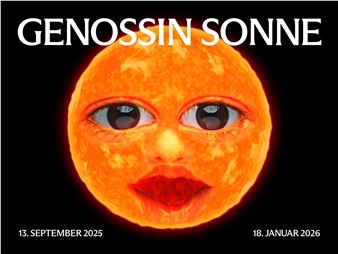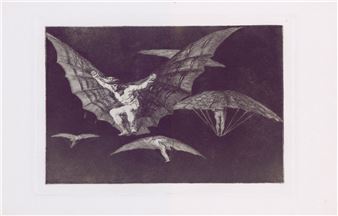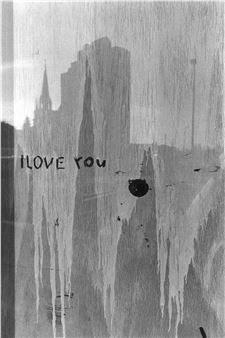gefaltet entfaltet: Werke aus der Sammlung des BLMK
Whether in the face, body, architecture, fabric, or paper, wrinkles pervade the world. Unwelcome signs of one’s own aging or mountains of ironing that have not been tackled, they represent both an opportunity and a challenge in the visual arts. Artists use them to test their own skills, explore design approaches, model spaces, and immerse themselves in the play with creases. The exhibition features works from all areas of the BLMK collection, spanning around a hundred years, including some that will be on display for the first time since their entry into the collection.
Coats protect, fabric wraps, the tutu revels in the abundance of fabric and gathers that barely concealed nudity. The omega fold on Mary’s veil or the plastic wrapped around heads are charged with meaning. The decorative pleats on a leather jacket transport us back to the 1980s. The pleated curtain serves as a motif-based link between the visible and the invisible. Paper is printed, folded, crumpled, and creased. Piles of clothes and waste symbolize the downside of affluent society and are a counterpoint to the splendor of pleated garments from past centuries. Folds provoke a confrontation with volume, inside and outside, front and back, the hidden and the revealed. In the 20th century, they emerged from the two-dimensional picture ground as sculptures and ultimately became the actual subject of artistic research. By activating the body’s memory, which almost automatically replays certain folding sequences (paper airplanes, boats), artists explore how much line and surface are necessary to recreate folding. They invite viewers to fold and unfold works of art, to further develop the fold. „For,“ as Gilles Deleuze writes, „the fold is always between two folds.“

Recommended for you
Whether in the face, body, architecture, fabric, or paper, wrinkles pervade the world. Unwelcome signs of one’s own aging or mountains of ironing that have not been tackled, they represent both an opportunity and a challenge in the visual arts. Artists use them to test their own skills, explore design approaches, model spaces, and immerse themselves in the play with creases. The exhibition features works from all areas of the BLMK collection, spanning around a hundred years, including some that will be on display for the first time since their entry into the collection.
Coats protect, fabric wraps, the tutu revels in the abundance of fabric and gathers that barely concealed nudity. The omega fold on Mary’s veil or the plastic wrapped around heads are charged with meaning. The decorative pleats on a leather jacket transport us back to the 1980s. The pleated curtain serves as a motif-based link between the visible and the invisible. Paper is printed, folded, crumpled, and creased. Piles of clothes and waste symbolize the downside of affluent society and are a counterpoint to the splendor of pleated garments from past centuries. Folds provoke a confrontation with volume, inside and outside, front and back, the hidden and the revealed. In the 20th century, they emerged from the two-dimensional picture ground as sculptures and ultimately became the actual subject of artistic research. By activating the body’s memory, which almost automatically replays certain folding sequences (paper airplanes, boats), artists explore how much line and surface are necessary to recreate folding. They invite viewers to fold and unfold works of art, to further develop the fold. „For,“ as Gilles Deleuze writes, „the fold is always between two folds.“
Artists on show
- Albert Weis
- Alexandra Müller-Jontschewa
- Arnd Schultheiß
- Benjamin Badock
- Christine Perthen
- Christine Prinz
- Claus Hänsel
- Cornelia Schleime
- Curt Querner
- Frank Herrmann
- Harald K. Schulze
- Helmut Senf
- Hermann Glöckner
- Irena Snarska
- Katrin Stangl
- Klaus Dennhardt
- Peter August Böckstiegel
- Peter Makolies
- Rafal Bujnowski
- Rolf Kuhrt
- Theo Balden
- Thoralf Knobloch
- Uwe Pfeifer
- Wilhelm Lachnit
- Wilhelm Müller
- Willi Sitte
- Willy Müller-Gera
- Willy Wolff
- Wolfgang Mattheuer
Contact details


 ARTISTS
ARTISTS















